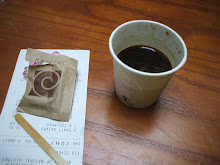This was one of two pieces solicited for The Believer. In the end, neither ever ran, and I never got an explanation. Such is life.
LIGHT: Amusement Parks
Luna Park, Coney Island
Cost (Advertised): $1,500,000
Cost (Real): $750,000
Number of individual incandescent lightbulbs according to advertisements: 200,000
Number according to the New York Times: 122,000
Highest point (central tower): 200 feet
Cost of admission: 10¢
The park opened May 16, 1903, at eight in the evening. In the first five hours, forty-five thousand people came through the gates to see the “Delirium of Something Doing” Thompson and Dundy had promised in their newspaper ads. So much money, so much hype for the moment when all the lights came on. Forget the Pan-American Exposition, this topped it by a mile, even the newspapers thought so. There were curves and arches, dancing like a 3,000,000 candle-power, oriental hallucination, and at the center of it all the grand tower that Fred Thompson cribbed from Buffalo. But he’d made it better, more colorful, the centerpiece of his “Realm of Fairy Romance,” a spire crusted with handblown glass and carbon filaments drawing the populus to a new age like moths to a bare lightbulb.
No question about it, the reputation of Fred Thompson and his partner Skip Dundy was already built on electricity. They’d been successful in Buffalo, and Luna Park would outlive them by 26 years. But what legacy overshadowed all else? The execution of Topsy the elephant. Most people think she killed a keeper (but her days as a killer came before she moved to Coney Island), that she went on a mad rampage (but her keeper put her up to it), and that they had to put her down no better than you would a feral dog. But the truth is that Thompson and Dundy were running out of money. They needed good publicity and Topsy and her keeper Whitey Alt weren’t exactly doing them any favors by touring Coney Island and chasing Italian workers up the tower.
But Thompson and Dundy came up with the perfect way to turn horror into fascination: they would hang the six-ton elephant. When the SPCA and a judge blocked the hanging, they agreed to let Edison electrocute her—his business needed the competitive boost—and make a movie of the event. When all was said and done and her feet had been made into umbrella stands, posterity had its ultimate say: one hundred years later, the Average Person might know that an elephant was electrocuted in Coney Island, but how many remember Luna Park?
Say what you want. Fred Thompson and Skip Dundy deserve better. You could see the glow from Luna Park (“The Heart of Coney Island”) thirty miles away when they turned the lights on. Steeplechase had nothing on it. Nothing in Coney Island ever did, not the Elephant Hotel, not Sea Lion Park, not the Parachute Jump, not the Cyclone, not even the hotel built under the Thunderbolt. (25,000 people on the beach one hot summer night, maybe.) Dreamland? Reynolds built it with an eye to what Thompson and Dundy had already accomplished. When Dreamland joined Luna Park and Steeplechase, you had the trifecta of American entertainment—innovation and incandescent light shooting up into the stratosphere, probably still hanging around in an atom or two up there—never to be duplicated. We’ve tried, and we keep trying to outdo that distant flicker, but nothing can really compete with that moment when more electricity than anyone had thought possible was harnessed and the lights were turned on at Luna Park.
One other fact that usually misses the historical record: there was a fifteen-minute blackout on opening night. Seems Edison’s company had underestimated just how great the demand would be.
skip to main |
skip to sidebar

I'm back. Have a blast, y'all.

About Me
Blog Archive
- June (1)
- July (1)
- May (5)
- January (3)
- December (1)
- November (2)
- September (4)
- August (11)
- July (7)
- June (1)
- May (2)
- April (2)
- March (5)
- February (4)
- January (4)
- November (3)
- October (3)
- September (3)
- August (1)
- July (3)
- April (2)
- March (5)
- February (3)
- January (7)
- December (8)
- November (12)
- October (5)
- September (8)
- August (6)
- July (5)
- June (14)
- May (13)
- April (24)
- March (21)
- February (22)
- January (22)
- December (20)
- November (26)
- October (24)
- September (35)
- August (27)
- July (36)
- June (21)
- May (26)
- April (28)
- March (27)
- February (20)
- January (38)
- December (26)
- November (11)
- October (32)
- September (33)
- August (30)
- July (36)
- June (34)
- May (50)
- April (36)
- March (3)
- January (3)
- December (3)
- November (3)
- August (6)
- July (4)
What I Like
- A List Apart
- Accidental Creative
- AdLand
- AdRants
- Atrios
- Batocchio
- Byrd House Market
- Chowhound
- Creating Passionate Users
- daddytypes.com
- Daily Kos
- Design Observer
- design*sponge
- Epicuriousity (John Haddad)
- Flickr shots
- Gawker
- Getting Real - 37 Signals
- Gothamist
- Incertus
- Phil's bookmarks (web design and more)
- river city food and wine
- Smeltery fonts
- TreeHugger
- Veer
- Vitaly Friedman's fonts
- Wonkette
- Wornamental, Thornamental Design
- Xtcian
- zefrank
